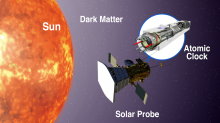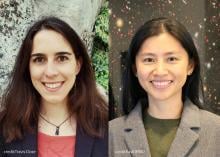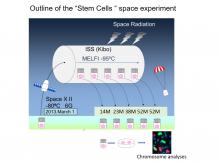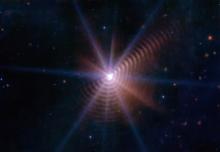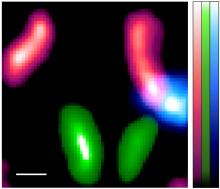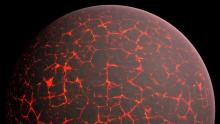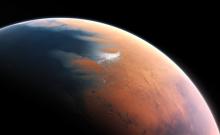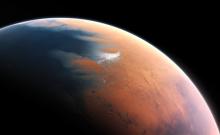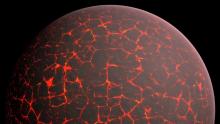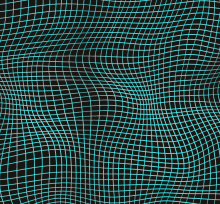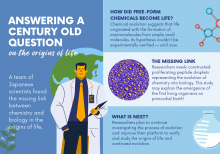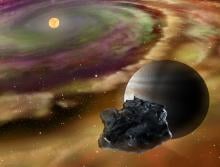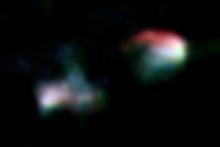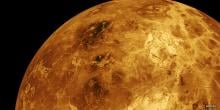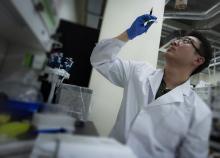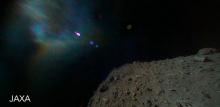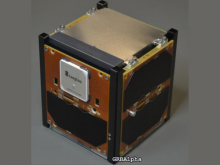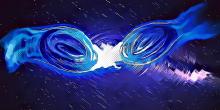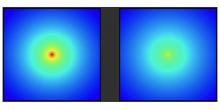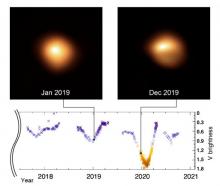Space sciences
News
29 Nov 2022
Kavli IPMU's Jia Liu is part of team which found the number of astronomy research papers being produced increased during the COVID-19 pandemic, but the number of new or junior researchers entering the field has dropped, and no single country's female astronomers were able to be more productive than their male colleagues on average.
25 Oct 2022
Small neighboring galaxy filled with dark matter detected with gamma rays, How a virus induces heart inflammation, Shedding light on the happy hormone, Microfossils may hold key evolution clues. Read all in the October's Editor's Choice plus Upcoming event KNOWLEDGE MARKETPLACE – Bangkok 2022: Exchanging of ideas for a Democratic Myanmar.
17 Oct 2022
A long-term experiment aboard the International Space Station has tested the effect of space radiation on mouse embryonic stem cells. Their findings will contribute to helping scientists better assess the safety and risks related to space radiation for future human space flights. The findings are published in the journal Heliyon.
13 Oct 2022
Puzzling image from the James Webb Space Telescope explained in two new studies
03 Oct 2022
Supermassive black holes can launch fast-moving plasma, which emit strong radio signals known as radio jets. Despite being discovered over 40 years ago, much remains unknown about how radio jets are produced. Now, a research team, led by Tohoku University astrophysicists, has attempted to clarify how plasma gets loaded into radio jets.
29 Aug 2022
Researchers at Osaka Metropolitan University have observed "baby stars" in the Small Magellanic Cloud, having an environment similar to the early universe. Toward one of the baby stars, they found molecular outflow, which has similar properties to those seen in the Milky Way galaxy, giving a new perspective on the birth of stars.
23 Jul 2022
Researchers create 'time machine' to study ancestor galaxies, Robotics engineers pay attention to matters of the heart, Custom suits for delivery worms, Tough, light structures with superior impact resistance and Virtual training can reduce stress and anxiety. Read all in the July's Editor's Choice plus op-ed: To boost South Korea’s basic science, look to values, not just budgets, this month's Image & Asia Research News 2022 magazine pick - Better memristors for brain-like computing.
05 Apr 2022
Researchers have captured images of cells in mice using astronomy technology
04 Apr 2022
Far from the white sandy beaches and palm trees of Honolulu, Hawaii, astronomers from around the world travel to the top of a volcano that looks like a plateau on Mars. Naoyuki Tamura, a project associate professor at the Kavli Institute for the Physics and Mathematics of the Universe, has been making that same journey to the top of Maunakea to supervise the construction of a new instrument for the Subaru Telescope.
04 Apr 2022
伝統的な日本の大学のカルチャーの殻を破り、フラットで国際的な研究所として注目を集める東京工業大学地球生命研究所(ELSI)。今年で10年目を迎えたELSIの魅力や運営のコツについて廣瀬敬前所長が語った。
16 Mar 2022
東京工業大学地球生命研究所(ELSI)は今年、転機を迎える。10年前の設立当初からのテーマであった「地球と生命の起源」から踏み出し、地球外生命の可能性まで研究対象を広げていく。次期所長の関根康人教授にこれからのELSIが目指すところを聞いた。
15 Mar 2022
The Earth-Life Science Institute (ELSI) based at Tokyo Institute of Technology will reach a turning point this year. For the first time in its 10-year history, it will extend the scope of its initial research theme, "The Origins and Evolution of the Earth and Life", to include searching for evidence of extra-terrestrial life. ELSI’s new director, Yasuhito Sekine, told Asia Research News what they hope to achieve in the next phase and how.
15 Mar 2022
Unlike most traditional Japanese universities, the Earth-Life Science Institute (ELSI) at Tokyo Institute of Technology has created a ‘flat’ and diverse research environment. On its ten-year anniversary, Outgoing Director Kei Hirose shares what is special about the institute and the secret behind its successful management.
15 Feb 2022
A new study on nematode worms reveals physical contact with objects can help prevent neuromuscular decline in simulated microgravity. The research provides new insights into maintaining human health in space.
12 Jan 2022
A team of researchers including Kavli IPMU's Valeri Vardanyan and Misao Sasaki have theorized that in addition to the gravitational waves originating from vacuum fluctuations during inflation, a large amount of gravitational waves can be sourced by the quantum vacuum fluctuations of additional fields during inflation.
10 Jan 2022
Unveiling substructures at the edge of the Galaxy, Nanodiamonds key to efficient hydrogen purification, How SARS-CoV-2 evades our immune system, A Zika hijacking with devastating impacts & Finding the right story for your audience, all in the January Editor's Choice.
09 Dec 2021
Using data on electromagnetic (EM) waves and plasma particles measured simultaneously via multiple satellites, an international collaborative research group has discovered the existence of invisible “propagation path” of EM waves and elucidated the mechanism by which EM waves propagate to the ground.
27 Sep 2021
The missing link isn’t a not-yet-discovered fossil, after all. It’s a tiny, self-replicating globule called a coacervate droplet, developed by two researchers in Japan to represent the evolution of chemistry into biology.
10 Aug 2021
Researchers have developed a novel technique to investigate the dynamics of the early Solar System by analyzing magnetites in meteorites utilizing the wave nature of electrons.
06 Jul 2021
Tohoku University researchers have pinpointed the Sun’s early magnetic field as the reason behind variations in the rock and metal components in the four rocky planets’ cores: Mercury, Venus, Earth and Mars.
06 Jul 2021
Researchers have used the latest wireless technology to develop a new radio receiver for astronomy. The receiver is capable of capturing radio waves at frequencies over a range several times wider than conventional ones, and can detect radio waves emitted by many types of molecules in space at once. This is expected to enable significant progresses in the study of the evolution of the Universe and the mechanisms of star and planet formation.
08 Jun 2021
A research group has revealed more about the lifespan of supermassive black holes. They accidentally caught a bright phase AGN signal from the Arp 187 galaxy with no signal from the nucleus.
14 May 2021
Images from the Akatsuki spacecraft unveil why Venus’s atmosphere rotates much faster than its surface.
11 May 2021
Tony Z. Jia is a specially-appointed assistant professor and lab manager at Japan’s Earth-Life Science Institute (ELSI), based at the Tokyo Institute of Technology. He is an astrobiologist and shared highlights from his dual research/management role.
28 Apr 2021
Scientists have recreated the reaction by which carbon isotopes made their way into different organic compounds, challenging the notion that organic compounds, such as amino acids, were formed by isotopically enriched substrates. Their discovery suggests that the building blocks of life in meteorites were derived from widely available substrates in the early solar system.
23 Mar 2021
A nanosatellite that Hiroshima University researchers helped develop was launched to orbit to monitor gamma-ray bursts in space.
25 Feb 2021
An international team of scientists led by the Galician Institute of High Energy Physics and the University of Aveiro, including an undergraduate from the Department of Physics at The Chinese University of Hong Kong (CUHK), has proposed the collision of two exotic compact objects known as boson stars as an alternative explanation for the origin of the gravitational wave signal GW190521.
16 Feb 2021
Our universe is dominated by a mysterious matter known as dark matter. Its name comes from the fact that dark matter does not absorb, reflect or emit electromagnetic radiation, making it difficult to detect.
08 Feb 2021
Betelgeuse is normally one of the brightest, most recognizable stars of the winter sky, marking the left shoulder of the constellation Orion. But lately, it has been behaving strangely: an unprecedentedly large drop in its brightness has been observed in early 2020 (Figure 1), which has prompted speculation that Betelgeuse may be about to explode.
Events
Sorry, nothing coming up for this discipline
Researchers
Sorry, nothing coming up for this discipline
Giants in history
Sorry, nothing coming up for this discipline
